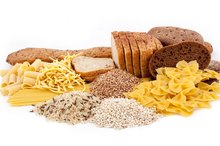What does fact checked mean?
At Healthfully, we strive to deliver objective content that is accurate and up-to-date. Our team periodically reviews articles in order to ensure content quality. The sources cited below consist of evidence from peer-reviewed journals, prominent medical organizations, academic associations, and government data.
- “International Journal of Obesity Related Metabolic Disorders;” A. Gollay & Collegues; 2000
- “International Journal of Obesity Related Metabolic Disorders;” A. Gollay & Collegues; 2000
- Weight-control Information Network: Very Low-Calorie Diets
The information contained on this site is for informational purposes only, and should not be used as a substitute for the advice of a professional health care provider. Please check with the appropriate physician regarding health questions and concerns. Although we strive to deliver accurate and up-to-date information, no guarantee to that effect is made.
How Does the 3-Day Chemical Breakdown Diet Work?
The three-day chemical breakdown diet goes by several names, including the chemical reaction diet and the three-day chemical diet. The basic premise of this diet is that you can increase metabolism and burn more fat by pairing certain foods or conversely by avoiding certain food combinations.
Calorie and Food Restrictions
The various incarnations of the three-day chemical diet share certain features. They all are based on creating specific chemical pairings in foods, so substitutions are not allowed. If you can’t stand a food that is recommended in the diet, you will do best to find other weight-loss strategies and diets. These diets are highly restricted in the calories you are allowed to consume. Three-day chemical breakdown diets also limit the types of food eaten, so the diets may not be nutritionally balanced. For these reasons, the diets are limited to three days in duration. Advocates offer that you can use the diet once a week or so, alternating between your normal diet and the chemical breakdown diet. One potential problem is that many people have difficulty maintaining highly restrictive diets and so fall quickly back into their old eating habits that helped them put weight on in the first place.
- The various incarnations of the three-day chemical diet share certain features.
- Three-day chemical breakdown diets also limit the types of food eaten, so the diets may not be nutritionally balanced.
Alkalinity
Food Combining Menu Ideas
Learn More
The food combining aspect of the three-day chemical breakdown diet has historical roots in the work of several nutritional experts. New York physician Dr. William Howard Hay began to develop the food-combining diet in 1904 to treat himself for medical conditions such as a dilated heart 1. He lost 50 lbs. in around three months and recovered from the conditions, according to Diet.com 1. He suggested in 1911 that how effectively you digest particular foods depends on the alkalinity versus acidity of the gastrointestinal environment. He believed that the pH value of foods should be managed to create a pH value that optimizes digestion of the foods consumed. For example, advocates of this approach suggest that carbohydrates and citrus fruits should not be eaten at the same time because the enzyme that breaks down carbohydrates works best in an alkaline environment. The acid in citrus fruits creates an acidic environment that allegedly hampers the breakdown of carbohydrates.
- The food combining aspect of the three-day chemical breakdown diet has historical roots in the work of several nutritional experts.
- He believed that the pH value of foods should be managed to create a pH value that optimizes digestion of the foods consumed.
Proteins and Carbohydrates
Alternative medicine advocate, proponent of raw food and fasting cures, and author of many books and articles from the 1920s through the '70s, Herbert M. Shelton asserted that you should eat protein foods and carbohydrate foods at separate meals to avoid combining fats and proteins. He believed that different digestive enzymes are necessary to break down different foods and that the stomach is limited in its capacity to produce the different kinds of enzymes simultaneously. He felt that by limiting your food to one type, your body would produce sufficient quantities of the necessary enzymes to more efficiently break down and metabolize the food you digest.
Fats and Carbohydrates
Effect of PH on Digestion
Learn More
Author and nutrition researcher Michael Mintignac advocates for another variant of a chemical diet. Mintignac recommends against consuming carbohydrates with fats. Mintignac argues that carbohydrates trigger the pancreas to release insulin, which causes the body to absorb fats. According to Mintignac, you can consume some carbohydrates when dieting so long as you don’t eat fats at the same time.
- Author and nutrition researcher Michael Mintignac advocates for another variant of a chemical diet.
- Mintignac recommends against consuming carbohydrates with fats.
Low-Calorie vs. Chemical Diet
Critics of three-day chemical breakdown diets suggest that most of these crash diets mandate severe restrictions in caloric intake, which itself is the true cause of any weight loss that takes place. Most of these diets have menu plans that provide only about 1,000 calories per day. A study published in April 2000 in the “International Journal of Obesity Related Metabolic Disorders” supports this view 3. This study found that two groups that consumed the same number of calories had the same amount of weight loss irrespective of the way the food was combined at meals. The conclusion appears to be that chemical combination diets gain whatever efficacy they have by restricting calories, not by enforcing certain combinations of food.
- Critics of three-day chemical breakdown diets suggest that most of these crash diets mandate severe restrictions in caloric intake, which itself is the true cause of any weight loss that takes place.
- The conclusion appears to be that chemical combination diets gain whatever efficacy they have by restricting calories, not by enforcing certain combinations of food.
Caution
A highly restrictive diet may be an effective component of an overall weight loss program, according to Weight-control Information Network, but severely restricted diets should be done under a physician’s supervision.
Related Articles
References
Writer Bio
Jon Williams is a clinical psychologist and freelance writer. He has performed, presented and published research on a variety of psychological and physical health issues.









